Home>Storage Ideas>Living Room Storage>Spring Cleaning Checklist: The Ultimate Guide To A Tidier Home
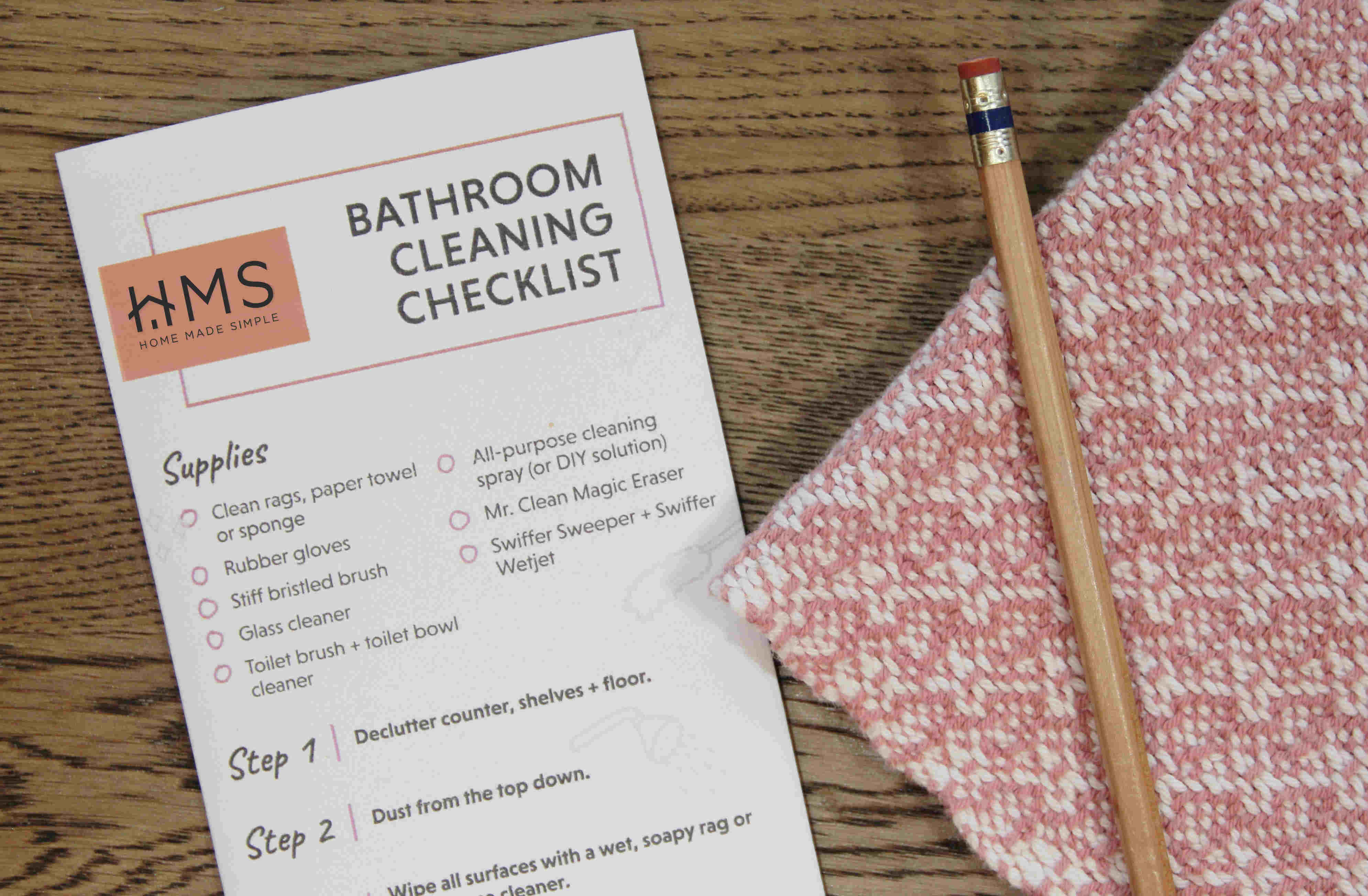

Living Room Storage
Spring Cleaning Checklist: The Ultimate Guide To A Tidier Home
Modified: January 8, 2024
Follow our comprehensive spring cleaning checklist for a tidier home. Find expert tips and tricks, including living room storage solutions, to declutter and organize your space.
(Many of the links in this article redirect to a specific reviewed product. Your purchase of these products through affiliate links helps to generate commission for Storables.com, at no extra cost. Learn more)
Introduction
Welcome to the ultimate guide to a tidier home! As the seasons change and spring approaches, it’s the perfect time to bring new life into your living space. One of the most effective ways to do that is through a thorough spring cleaning. By decluttering, organizing, and deep cleaning every room in your home, you’ll not only create a cleaner and more inviting environment, but you’ll also promote a sense of peace and tranquility.
This comprehensive spring cleaning checklist will guide you through each room in your home, providing tips and suggestions to help you tackle the cleaning process efficiently and effectively. From the kitchen to the bedroom, the bathroom to the garage, we will cover every nook and cranny, leaving no stone unturned.
But spring cleaning isn’t just about tidying up your physical space. It’s also an opportunity to refresh your mindset and set intentions. As you declutter your living areas, you’re also decluttering your mind and creating space for new possibilities. So, let’s dive in and get started on transforming your home into a clean and organized sanctuary!
Key Takeaways:
- Transform your home into a clean and organized sanctuary by following a systematic and efficient spring cleaning routine. Embrace the process with enthusiasm and enjoy the satisfaction of a rejuvenated living space.
- Infuse your spring cleaning with creativity and human touch, creating a warm and inviting atmosphere. Set intentions for your living space, declutter your mind, and embrace the positive impact of a clean and organized home.
Read more: The Ultimate Bathroom Cleaning Checklist
Kitchen
The kitchen is often referred to as the heart of the home, making it a top priority when it comes to spring cleaning. Start by emptying all your cabinets, drawers, and pantry shelves. Discard any expired or unused items, and donate anything that is still in good condition but no longer needed. Wipe down the interior of the cabinets and shelves with a damp cloth to remove any dust or grime.
Next, move on to your appliances. Give your refrigerator a thorough cleaning, removing all the food items and wiping down the shelves and drawers. Check the expiration dates on condiments and dispose of any that are past their prime. Clean the oven, stovetop, and microwave by using a suitable cleaner or a mixture of baking soda and water.
Clean and disinfect your countertops, paying close attention to areas around the sink and stove where stains and food debris may accumulate. Don’t forget to wash your sink thoroughly, including the faucet and drain. Polish your stainless steel appliances and fixtures to restore their shine.
For a deep clean, tackle the oven hood and exhaust fan. Remove the filters and clean them with warm soapy water. Wipe down the exterior surface of the hood and use a vacuum to remove any dust or debris from the fan.
Finally, pay attention to the floor. Sweep or vacuum to remove any loose dirt or crumbs, and then mop using a suitable cleaner for your specific flooring type. Don’t forget to move appliances and furniture to clean under and behind them.
By following these steps, your kitchen will not only be sparkling clean, but it will also be a healthier and more enjoyable space to cook and gather with loved ones.
Living Room
The living room is where we relax, entertain guests, and spend quality time with our loved ones. It’s important to create a clean and inviting space that promotes comfort and relaxation. Start by decluttering the room, removing any items that don’t belong or that you no longer use or love. This can include old magazines, unused decor, or excess furniture.
Dust and clean all surfaces, including coffee tables, side tables, shelves, and entertainment centers. Use a microfiber cloth or a duster to remove dust from electronics, picture frames, and other decorative items. Pay attention to hard-to-reach areas like ceiling corners and light fixtures.
Consider giving your furniture a good clean as well. Vacuum fabric upholstery and use a fabric cleaner for any stains. For leather furniture, use a leather cleaner and conditioner to keep it looking fresh and supple.
Windows are a key focal point in the living room, so it’s important to clean them thoroughly. Remove any dust and dirt from the window sills and frames, and wash the glass using a window cleaner or a mixture of vinegar and water. Don’t forget to wipe down blinds or curtains as well.
If you have carpeting in your living room, deep clean it by vacuuming thoroughly and spot treating any stains. Consider renting a carpet cleaner for a more thorough clean. For hardwood or laminate floors, sweep or vacuum to remove dirt and debris, and then mop with a suitable cleaner that won’t damage the finish.
Finally, freshen up the air in your living room by opening windows and allowing fresh air to circulate. Consider using natural air fresheners or placing indoor plants to improve air quality and add a touch of greenery to the space.
By following these steps, your living room will become a clean, inviting, and cozy haven for relaxation and quality time with family and friends.
Bedroom
The bedroom is the place where we retreat for rest and relaxation, so it’s essential to create a clean and calming atmosphere. Begin by decluttering your bedroom, removing any items that don’t belong or that no longer serve you. Clear off nightstands and dressers, and organize your belongings in a way that promotes a sense of peace and order.
Remove all bedding and launder it, including sheets, pillowcases, duvet covers, and blankets. While the bedding is being washed, take the opportunity to vacuum and clean your mattress. Use a mattress cleaner or sprinkle baking soda over the surface, letting it sit for a few hours before vacuuming it up.
Dust and wipe down all surfaces, including nightstands, dressers, and mirrors. Pay attention to areas that often collect dust, such as baseboards, vents, and light fixtures. Clean windows and curtains to allow natural light to flow into the room.
If you have carpeting, vacuum thoroughly and use a carpet cleaner to remove any stains or odors. For hardwood or laminate floors, sweep or vacuum to remove dust and dirt, and then mop with a suitable cleaner.
Take time to go through your closet and donate any clothing items you no longer wear or love. Organize your clothes by category or color to make it easier to find what you need. Wipe down closet shelves and vacuum or sweep the floor.
Lastly, create a calming ambiance in your bedroom. Consider adding a few plants to improve air quality and bring a touch of nature indoors. Arrange cozy pillows and blankets on your bed to create a welcoming and relaxing atmosphere.
By following these steps, you’ll turn your bedroom into a clean and serene oasis, promoting a restful night’s sleep and a peaceful start to your day.
Bathroom
The bathroom is a space that requires regular cleaning and upkeep to maintain optimal hygiene. Begin by removing all items from your bathroom cabinets and drawers. Discard expired or unused products, and organize the remaining items in a way that maximizes storage space.
Next, tackle the surfaces in your bathroom. Wipe down countertops, sinks, and faucets using a mild cleaning solution or a mixture of vinegar and water. Scrub the toilet bowl with a toilet cleaner and disinfect the seat and handle. Clean the shower and bathtub, paying close attention to grout lines and any soap scum buildup. Use a glass cleaner or a vinegar solution to clean the mirrors and windows.
Don’t forget about the walls and floors of your bathroom. Wipe down walls and tiles to remove any dirt or mildew. Use a suitable cleaner for your flooring type, whether it’s tile, vinyl, or laminate. Sweep or vacuum to remove loose dirt and debris, and then mop with a disinfectant solution.
Paying attention to the small details can make a big difference in the cleanliness of your bathroom. Clean or replace shower curtains and liners, and wash bath mats and towels. Polish any metal fixtures to remove water spots and restore their shine.
Finally, freshen up the air in your bathroom by opening windows or using a ventilation fan. Consider placing air fresheners or using essential oil diffusers to maintain a pleasant fragrance.
To prevent future buildup and maintain a clean and organized bathroom, develop a routine of regular cleaning and decluttering. Wipe down surfaces daily, and perform a deep clean once a week. Stay on top of organizing and discard expired or unused products regularly.
By following these steps, you’ll create a clean and refreshing bathroom space that promotes good hygiene and a sense of wellbeing.
Home Office
The home office is a space that calls for cleanliness and organization to promote productivity and focus. Begin by decluttering your workspace. Remove any unnecessary paperwork, office supplies, or items that you no longer need. Clear off your desk surface and create designated areas for different tasks.
Clean and dust all surfaces, including your desk, shelves, and filing cabinets. Use a microfiber cloth or a duster to remove dust from electronics, such as your computer, keyboard, and monitor. Pay attention to cables and cords, organizing them neatly and securing them out of sight.
Next, organize your papers and documents. File away any loose papers and create a system for organizing important documents. Consider using labeled folders, binders, or file cabinets to keep everything in order.
Take time to clean and disinfect your keyboard, mouse, and other frequently touched items. You can use a mixture of rubbing alcohol and cotton swabs to properly clean these items.
Pay special attention to your computer and other electronic devices. Clean the screens with a gentle, non-abrasive cleaner and a microfiber cloth. Remove any dust or debris from the vents, as this can affect the performance of your devices. A can of compressed air can be useful for this task.
Don’t forget about the flooring in your home office. If you have carpeting, vacuum thoroughly and consider using a carpet cleaner for a deep clean. For hard surfaces, sweep or vacuum to remove debris, and then mop using a suitable cleaner.
To maintain a clutter-free and organized home office, establish a routine for cleaning and organizing your workspace. File away papers regularly, wipe down surfaces weekly, and declutter as needed.
By following these steps, you’ll create a clean and organized home office space that promotes focus, productivity, and a sense of professionalism.
Dining Room
The dining room is a gathering space for family meals and entertaining guests. Keeping it clean and inviting is essential. Begin by decluttering the room, removing any items that do not belong or that are no longer used. Clear off the dining table and create a designated place for items such as napkins, placemats, and centerpieces.
Dust and clean all surfaces, including the dining table, chairs, buffet or sideboard, and any other furniture. Use a damp cloth to remove dust from decorative items and light fixtures. Pay attention to hard-to-reach areas, such as corners and crevices.
Clean the windows and window treatments to allow natural light to flow into the room. Wipe down blinds or curtains and consider laundering or dry cleaning them if necessary.
If you have a carpet or area rug in your dining room, vacuum thoroughly to remove loose dirt and crumbs. Consider spot cleaning any stains or using a carpet cleaner for a deeper clean. For hard surfaces, sweep or vacuum to remove dirt, and then mop using a suitable cleaner.
Paying attention to the details will enhance the overall cleanliness of your dining room. Polish any wooden furniture to restore their shine and remove water stains. Use glass cleaner to remove any fingerprints or smudges from glass tabletops or cabinets.
Set the mood in your dining room by considering ambient lighting. Clean and dust any light fixtures or chandeliers, and replace any burnt-out bulbs. Consider adding candles or dimmable lamps for a cozy and inviting atmosphere during evening meals or special occasions.
Finally, ensure that your dining room is well-organized by having a designated storage area for dishes, utensils, and table linens. Keep them neatly organized and easily accessible for everyday use and entertaining guests.
By following these steps, your dining room will be a clean and inviting space for enjoyable family meals and memorable gatherings with friends.
Laundry Room
The laundry room is a space dedicated to the essential task of doing laundry. Keeping it clean and organized will streamline the process and make it a more pleasant experience. Begin by decluttering the space, removing any items that do not belong or are no longer needed. Create designated areas for laundry supplies, such as detergent, fabric softener, and stain removers.
Wipe down all surfaces, including countertops, shelves, and the tops of your washer and dryer. Clean the inside of your washing machine and dryer by running a cycle with vinegar to remove any buildup or odors. Pay special attention to any lint filters or lint traps and clean or replace them as necessary.
If you have a laundry sink, clean it thoroughly by using a suitable cleaner for the sink material. Make sure to wipe down faucets and handles as well.
Organize your laundry supplies in a way that makes them easily accessible. Consider using storage containers or shelves to keep everything in order. Detergents and cleaning products should be stored in a safe and secure location, away from children and pets.
Pay attention to the flooring in your laundry room. Sweep or vacuum to remove any dust or debris, and mop using a suitable cleaner for the type of flooring you have. Consider placing a rug or mat in front of your washer and dryer to prevent any water or detergent spills from damaging the floor.
Lastly, create a system for sorting and organizing your laundry. Use separate hampers or bins for different types of laundry (whites, darks, delicates, etc.) to make the sorting process easier. Consider adding a folding station or table to make it convenient to fold and sort clean laundry.
By following these steps, you’ll create a clean and functional laundry room that will make doing laundry a more efficient and enjoyable task.
Garage
The garage often becomes a catch-all space for storage and can easily become disorganized and cluttered. Spring is the perfect time to tackle this space and transform it into a clean and functional area. Begin by decluttering the garage, sorting through items and determining what to keep, donate, or discard.
Create designated zones for different categories of items, such as tools, sports equipment, and seasonal decorations. Use shelves, cabinets, or storage bins to keep everything organized and easily accessible.
Once you have decluttered and organized, thoroughly clean the garage. Sweep or vacuum the floor to remove any dirt, dust, and debris. Wipe down any shelves, workbenches, or surfaces to remove any accumulated grime.
Pay attention to the garage door by cleaning both the interior and exterior. Remove any dirt or cobwebs and use a gentle cleaner to wipe down any surfaces. Lubricate the moving parts of the garage door to ensure smooth operation.
Inspect any windows in the garage and clean them inside and out. If necessary, replace any damaged or cracked glass.
Take time to organize your tools and keep them easily accessible. Hang tools on pegboards or use wall-mounted tool organizers. Group similar items together, such as gardening tools or automotive supplies.
Ensure that your gardening supplies, paint, and other chemicals are properly stored. Keep them in a secure place away from children and pets, following the manufacturer’s instructions for storage.
Consider adding additional lighting to your garage to improve visibility. Install LED lights or motion-sensing lights to make it easier to navigate and work in the garage.
By following these steps, you’ll transform your garage into a clean and well-organized space, allowing for easier access to your belongings and creating additional storage for a clutter-free home.
Read more: Ultimate Guide To Storm Windows
Outdoor Areas
As the weather gets warmer, it’s time to turn our attention to the outdoor areas of our homes. Whether you have a backyard, front yard, or balcony, these spaces can greatly enhance our enjoyment of the great outdoors. Start by assessing the area and identifying any immediate cleaning or maintenance needs.
If you have a yard, clear away any debris, such as fallen leaves or branches, from the lawn and flower beds. Trim overgrown shrubs or hedges and remove any weeds that may have popped up. Mow the lawn and edge the borders for a neat and manicured appearance.
Give your outdoor furniture a good clean by using soapy water and a brush to remove any dirt or stains. If your furniture is made of wood, consider applying a fresh coat of paint or stain to protect it from the elements. For metal or plastic furniture, wipe them down with a damp cloth and a mild cleaner.
Don’t forget about your outdoor grill or barbecue area. Clean the grates, remove any ash or debris, and wipe down the exterior surfaces. Check your propane or charcoal supply and restock as needed.
Wash windows and doors that lead to your outdoor areas to let in plenty of natural light and provide a clear view of the outdoors. Clean any outdoor light fixtures and replace any burnt-out bulbs to ensure proper visibility during the evenings.
Inspect and clean any outdoor decking or patios. Sweep away debris and wash the surface with a suitable cleaner. For wooden decks, consider applying a fresh coat of sealant or stain to protect it from moisture and wear.
Enhance the ambiance of your outdoor space by adding potted plants, flowers, or hanging baskets. Invest in outdoor lighting, such as string lights or solar-powered lanterns, to create a warm and inviting atmosphere.
Lastly, ensure that your outdoor area is safe and secure. Check for any loose steps or handrails and tighten or repair them as needed. Ensure that your fencing or boundaries are intact and sturdy.
By following these steps, you’ll have a beautiful and inviting outdoor space where you can relax, entertain, and enjoy the beauty of nature.
Basement
The basement is a versatile space that can serve a variety of purposes, from storage to additional living areas. Keeping the basement clean and organized is essential to make the most of this valuable space. Start by decluttering the area, sorting through items and determining what to keep, donate, or discard.
Once you have cleared out unnecessary items, thoroughly clean the basement. Sweep or vacuum the floor to remove any dust, dirt, and debris. Wipe down any surfaces, such as shelves, countertops, and furniture, to remove any accumulated grime.
Pay attention to any windows in the basement and clean them inside and out. Open the windows to allow fresh air to circulate and make the space feel more inviting. If necessary, clean or replace window screens to keep pests out.
If your basement has a laundry area, ensure that it is clean and well-maintained. Wipe down appliances, such as the washing machine and dryer, and clean the lint trap.
If you have a basement bathroom, clean and sanitize all surfaces, including the toilet, sink, and shower. Check for any plumbing issues and address them promptly.
Consider adding additional storage solutions to maximize the use of space in the basement. Install shelves, cabinets, or storage bins to keep items organized and easily accessible. Label storage containers to make it easier to find specific items in the future.
Inspect the basement for any signs of water damage or leaks. Address any issues promptly to prevent further damage or mold growth. Consider using a dehumidifier to control the humidity level in the basement and prevent moisture-related problems.
Ensure that the basement is well-lit to create a welcoming atmosphere. Add sufficient lighting fixtures or lamps to brighten up the space. Consider using light-colored paint or wallpapers to make the area feel more open and spacious.
By following these steps, you’ll transform your basement into a clean and organized space that can serve a variety of purposes, from storage to recreation or even an additional living area.
Attic
The attic is often a hidden and forgotten space in our homes, but with a little cleaning and organization, it can become a valuable area for storage or even an additional living space. Begin by decluttering the attic, sorting through items and determining what to keep, donate, or discard.
Once you have cleared out unnecessary items, thoroughly clean the attic. Sweep or vacuum the floor to remove any dust, dirt, and cobwebs. Wipe down any surfaces, such as shelves, cabinets, or furniture, to remove any accumulated grime.
Inspect the attic for any signs of pests or critters. Seal any openings or cracks that may be allowing unwanted guests to enter. Consider setting up traps or contacting a professional pest control service if necessary.
Organize your storage items in a way that makes them easily accessible and maximizes the use of space. Use labeled storage containers or bins to keep items organized and help you find them easily when needed. Consider using shelves or built-in storage solutions to make the most of the vertical space in the attic.
Pay attention to any insulation in the attic. Inspect for any damage or signs of wear and address these issues promptly to maintain proper insulation and energy efficiency in your home.
Ensure that the attic is well-ventilated to prevent moisture buildup and potential damage. Consider installing vents or using a dehumidifier to control the humidity level in the space.
If you are considering converting your attic into a functional living space, consult with professionals to ensure that the space meets safety codes and regulations. This may include adding proper insulation, electrical wiring, and ventilation.
Implement proper lighting in the attic to create a safe and welcoming space. Install light fixtures or use portable lamps to provide sufficient illumination. Consider using light-colored paint or wallpapers to brighten up the space.
Regularly check the attic for any signs of water leaks or roof damage. Address these issues promptly to prevent further damage to your home.
By following these steps, you can transform your attic into a clean and organized space that serves as valuable storage or even a functional living area, adding value to your home.
When spring cleaning, start from the top and work your way down. This means dusting high surfaces first, then moving on to lower surfaces and finally the floors. This will prevent dust and dirt from falling onto already cleaned areas.
Appliances and Electronics
Appliances and electronics play a significant role in our daily lives, making our tasks easier and more convenient. Keeping them clean and well-maintained is crucial for their longevity and optimal performance. Start by creating a checklist of all the appliances and electronics in your home that require cleaning and maintenance.
For kitchen appliances such as the refrigerator, oven, and microwave, begin by unplugging them from the power source. Remove any removable parts, such as shelves or trays, and wash them with warm soapy water. Wipe down the interior surfaces of the appliances, removing any spills or stains. For stainless steel appliances, use a stainless steel cleaner to restore their shine.
Cleaning your dishwasher involves removing any debris or food particles from the filter and cleaning the spray arm to ensure proper water circulation. Run a dishwasher cleaner or a cup of vinegar on an empty cycle to remove any buildup and eliminate odors.
For small kitchen appliances like coffee makers and toasters, follow the manufacturer’s instructions for cleaning. Descale coffee makers regularly to remove mineral deposits. Clean the exterior surfaces of appliances using a damp cloth and mild soap.
When it comes to electronics, there are specific cleaning methods to ensure their safety. Start by turning off and unplugging the devices. Use a soft, lint-free cloth to gently wipe down the screens and exteriors of televisions, laptops, and monitors. Avoid using harsh chemicals or abrasive cleaning solutions, as they can damage the screens.
To clean computer keyboards, use compressed air or a small brush to remove dust and debris from between the keys. Wipe down the keyboard with a gentle cleaning solution and a soft cloth. Clean computer mice and other peripherals using a microfiber cloth dampened with a mild cleaning solution.
Avoid using liquid cleaners directly on electronics or spraying them directly on screens or buttons. Instead, spray the cleaner onto a cloth and then gently clean the surfaces. Allow the electronics to dry completely before plugging them back in or turning them on.
Regularly check and clean the vents on appliances and electronics to prevent dust buildup, which can lead to overheating and reduced performance. Use a vacuum cleaner or a soft brush to remove any dust or debris from the vents.
By regularly maintaining and cleaning your appliances and electronics, you can prolong their lifespan and ensure they continue to operate efficiently. Consult the manufacturer’s guidelines for specific cleaning instructions and recommendations for each device.
Read more: The Ultimate Guide To Storage Drawers
Windows and Doors
Windows and doors are not only functional elements of our homes but also contribute to the overall aesthetic appeal. Keeping them clean and well-maintained enhances both the interior and exterior of our living spaces. Begin by gathering the necessary tools and materials for cleaning, such as a soft cloth, window cleaner, vinegar, water, and a squeegee.
Start by dusting the window sills and frames using a brush or a damp cloth to remove any loose dirt or debris. Vacuum or sweep the area around the windows and doors to remove any dust or cobwebs.
To clean the windows, mix a solution of mild soap or window cleaner with water in a spray bottle. Spray the solution onto the glass and use a soft cloth or sponge to wipe away dirt, dust, and fingerprints. For stubborn stains or buildup, use a mixture of vinegar and water. Alternatively, you can use a commercial glass cleaner following the manufacturer’s instructions.
Use a squeegee to remove the cleaning solution from the glass, starting at the top and working your way down in a smooth, vertical motion. Wipe off any excess liquid from the squeegee between each stroke. Finish by using a clean, lint-free cloth to dry and polish the glass for a streak-free shine.
Pay attention to the window tracks and channels. Use a brush or a cloth dampened with soap and water to remove any dirt or grime. For stubborn buildup, use a toothbrush or a cotton swab. Wipe down the tracks and channels with a dry cloth to ensure they are clean and free of debris.
Inspect the window screens for any tears or damage. If necessary, remove and clean the screens by soaking them in a solution of warm, soapy water. Gently scrub them with a soft brush, rinse thoroughly, and allow them to dry before reinstalling.
When it comes to doors, wipe down the surfaces using a gentle cleaner or a mixture of mild soap and water. Pay close attention to areas where dirt, fingerprints, or smudges are visible. Clean door frames and handles using a damp cloth and mild cleaner, then dry them thoroughly.
Regularly check the weatherstripping and seals around doors and windows. Replace any damaged or worn weatherstripping to maintain proper insulation and energy efficiency in your home.
By following these steps and incorporating regular window and door maintenance into your cleaning routine, you can enjoy clean, sparkling windows and doors that enhance the overall beauty of your home both inside and out.
Walls and Ceilings
Walls and ceilings are essential elements of our homes, and keeping them clean and well-maintained can greatly enhance the overall appearance and atmosphere of our living spaces. To begin cleaning walls and ceilings, gather the necessary tools and materials, including a duster, soft cloth, mild cleaner, water, and a ladder if needed.
Start by dusting the walls and ceilings using a duster or a dry cloth. This will remove any loose dust or cobwebs that may have accumulated. Pay special attention to corners, light fixtures, and vents, as these areas tend to collect more dust.
If the walls and ceilings have visible stains or marks, spot clean them using a mild cleaner mixed with water. Test the cleaner on a small, inconspicuous area first to ensure it doesn’t damage the paint or wallpaper. Gently scrub the stained area using a soft cloth or sponge, and rinse with a clean, damp cloth.
For more extensive cleaning, you may need to wash the walls and ceilings. Fill a bucket with warm water and a small amount of mild cleaner. Dip a soft cloth or sponge into the soapy water, wring out excess liquid, and gently wash the walls and ceilings in a circular motion, working from top to bottom.
Be cautious when washing painted walls, as excessive moisture or aggressive scrubbing can damage the paint. Avoid using abrasive cleaners or rough materials that can leave scratches or marks.
If you have wallpapered walls, use a wallpaper-safe cleaner and follow the manufacturer’s instructions for cleaning and maintenance. Test the cleaner on a small, inconspicuous area before applying it to the entire wall.
For textured walls or ceilings, such as those with popcorn or stucco finish, avoid using excessive moisture as it may damage or loosen the texture. Instead, use a dry cloth or a duster to gently remove dust and debris.
After cleaning, dry the walls and ceilings thoroughly using a clean, dry cloth or allow them to air dry. Opening windows or using fans can help expedite the drying process and prevent any potential moisture damage.
If you notice any cracks, holes, or other damage to your walls or ceilings, consider repairing and repainting them to maintain a fresh and clean appearance. Consult with a professional if you are unsure about tackling any repairs.
By incorporating regular dusting and periodic cleaning into your routine, you can ensure that your walls and ceilings remain clean, bright, and visually appealing, enhancing the overall beauty and cleanliness of your home.
Floors
Floors are an integral part of our homes and experience a high amount of foot traffic, making regular cleaning and maintenance crucial for their longevity and appearance. Whether you have carpet, hardwood, tile, or laminate flooring, we’ll provide you with tips to keep your floors clean and well-maintained.
Start by removing any loose dirt, dust, or debris from the floor with a broom or vacuum cleaner. This initial step helps prevent scratching and spreading dirt when you proceed to deep clean.
For carpeted floors, regular vacuuming is essential to remove dust, pet hair, and allergens that can accumulate within the fibers. Pay extra attention to high-traffic areas and use a crevice tool or attachment to clean along baseboards and corners. Consider scheduling professional carpet cleaning at least once a year to remove deep-set stains and provide a thorough deep clean.
If you have hardwood floors, sweeping or vacuuming with a soft brush attachment is the first step to remove dirt and dust. For a deeper clean, use a wood floor cleaner that is suitable for your specific type of finish. Avoid using excessive water, as it can damage the wood. Instead, use a slightly damp mop or microfiber cloth to gently clean the surface. Be cautious of any spills and clean them up promptly to prevent staining or warping of the wood.
Tile and laminate floors can be cleaned using a combination of sweeping, vacuuming, and mopping. Start by removing loose debris, then use a suitable cleaner diluted with water. Mop the floor using a microfiber mop or cloth, and dry any excess moisture to prevent slipping. Avoid using abrasive cleaners that may damage the surface or leave streaks.
For natural stone floors, consult the manufacturer’s guidelines for specific cleaning instructions. Different types of stone may require special cleaners or sealants to maintain their appearance and durability. Be cautious of using acidic or abrasive cleaners that may harm the stone. Mop the floor using a soft mop or cloth, and dry it thoroughly to prevent water spots.
Regular maintenance of floors includes promptly wiping up spills to prevent stains and avoiding excessive moisture that can damage certain flooring materials. Place doormats at entryways to minimize the amount of dirt and debris tracked into your home. Consider using area rugs or runners in high-traffic areas to protect the flooring and reduce wear.
If your floors have scratches or minor damage, consider using appropriate floor care products or hiring professionals to refinish or repair them. This will help restore their original appearance and protect them from further damage.
By incorporating regular cleaning and maintenance into your floor care routine, you can ensure that your floors remain clean, beautiful, and inviting, enhancing the overall cleanliness and appearance of your home.
Furniture
Furniture plays a significant role in the comfort and aesthetics of our homes. Regular cleaning and maintenance of our furniture not only keep it looking good but also help to prolong its lifespan. Follow these tips to keep your furniture clean and well-cared for.
Start by regularly dusting your furniture using a soft cloth or a duster. This will help remove loose dust and prevent buildup. Pay special attention to areas that are often overlooked, such as corners, crevices, and under cushions.
For wooden furniture, consider using a gentle wood cleaner or a mixture of mild soap and water. Wipe down the surfaces using a soft cloth and avoid using abrasive materials that can scratch the wood. If your furniture is coated with a protective sealant, follow the manufacturer’s instructions for cleaning and maintenance.
Leather furniture requires specific care to maintain its appearance and quality. Start by vacuuming the surface to remove loose dirt and debris. Wipe down leather furniture using a mild soap and water solution, and make sure to use a soft cloth or sponge. Avoid using excessive water, as it can damage the leather. Consider using a leather conditioner to keep it moisturized and supple.
For upholstered furniture, check the manufacturer’s instructions for specific cleaning recommendations. In general, vacuum the fabric regularly to remove dust and debris. If spills occur, clean them up promptly by blotting with a clean cloth or paper towel. Avoid rubbing, as it can spread the stain. Consider using upholstery cleaners or hiring professional upholstery cleaners for more thorough cleaning.
Metal furniture, such as aluminum or stainless steel, can generally be cleaned using mild soap and water. Wipe down the surfaces with a soft cloth or sponge and dry them thoroughly to prevent water spots. Avoid using abrasive cleaners or steel wool, as they can scratch the metal.
Regardless of the material, it’s essential to protect your furniture from excessive sunlight and moisture. Direct sunlight can cause fading or discoloration, so consider using curtains or blinds to shield your furniture from harsh rays. Use coasters or placemats to prevent water rings or heat damage from hot items.
Regularly check and tighten any loose screws or bolts on your furniture to ensure stability and safety. If you notice any damage or wear, consider repairing or replacing parts as needed to maintain the quality and functionality of your furniture.
By incorporating regular dusting, cleaning, and proper care, you can keep your furniture looking its best and extend its lifespan. Taking the time to maintain your furniture will enhance the comfort and beauty of your living spaces for years to come.
Lighting Fixtures
Lighting fixtures are an essential component of our homes, offering illumination and ambiance. Regular cleaning and maintenance of these fixtures will ensure they remain functional and enhance the overall atmosphere of your living spaces. Follow these tips to keep your lighting fixtures clean and well-maintained.
Start by turning off the power to the lighting fixture and allowing it to cool down before cleaning. Use a step stool or ladder, if necessary, to reach fixtures that are higher up.
For ceiling fixtures, such as chandeliers or pendant lights, gently dust the surface using a soft cloth or a feather duster. If there are any removable parts, carefully detach them and place them in warm, soapy water for cleaning. Rinse and dry the parts thoroughly before reattaching them to the fixture.
Clean glass or crystal lighting fixtures with a solution of mild soap and water. Use a soft cloth or sponge to wipe down the surfaces, paying attention to any intricate details or crevices. Rinse the cloth or sponge frequently to avoid spreading dirt. Dry the fixture thoroughly to prevent water spots or streaks.
For fabric lampshades, use a soft brush or a lint roller to remove dust and lint. If the lampshade is removable, follow the manufacturer’s instructions for cleaning. Some fabric lampshades may be spot cleaned with a mild detergent, while others may require professional cleaning.
For metal fixtures, such as wall sconces or floor lamps, use a microfiber cloth or a soft cloth lightly dampened with water or a mild cleaner. Avoid using abrasive materials or harsh chemicals that can scratch or damage the metal finish.
To clean light bulbs, ensure that they are turned off and cool to the touch. Gently dust them using a dry cloth or a soft-bristle brush. Avoid applying excessive pressure, as this may damage the bulb.
Regularly check and replace light bulbs as needed to maintain optimal illumination. Consider using energy-efficient bulbs to reduce energy consumption and prolong their lifespan.
Inspect the wiring and electrical components of your lighting fixtures. If you notice any frayed wires, loose connections, or other issues, it’s important to address them promptly. Consult a qualified electrician if you are unsure about any electrical repairs or maintenance.
In addition to regular cleaning, it’s important to periodically inspect and maintain outdoor lighting fixtures. Check for any damage, such as cracks or corrosion, and replace or repair affected parts. Outdoor fixtures may require more frequent cleaning due to exposure to the elements.
By regularly cleaning and maintaining your lighting fixtures, you can enjoy optimal illumination and enhance the overall beauty and functionality of your home. Remember to always follow safety guidelines and turn off the power before cleaning or performing any maintenance on your lighting fixtures.
Storage Spaces
Storage spaces play a crucial role in keeping our homes organized and clutter-free. Whether you have built-in cabinets, closets, or standalone storage units, regularly cleaning and organizing these spaces will maximize their efficiency and functionality. Follow these tips to keep your storage spaces clean and well-utilized.
Start by emptying out the storage space. Remove all items and sort them into categories, such as clothing, books, or seasonal decorations. This step allows you to assess what you have, declutter unnecessary items, and create a more organized system.
With the storage space emptied, thoroughly clean the area. Dust shelves, wipe down surfaces, and vacuum or sweep the floor. This ensures a fresh and clean start for organizing and rearranging your belongings.
Before returning items to the storage space, assess their usefulness and consider donating or discarding any items that are no longer needed or in good condition. This helps to reduce clutter and make more room for the things you truly need and love.
Utilize storage containers and organizers to keep like-items together and maximize space. This can include bins, baskets, or file organizers for paperwork. Label each container to easily identify its contents and make locating items more efficient.
When storing clothing, consider using vacuum-sealed bags to save space and protect garments from dust or potential damage. Utilize drawer dividers or hanging organizers to keep smaller items, such as socks or accessories, neat and easily accessible.
For books and documents, organize them by category or importance. Utilize bookshelves and file cabinets to keep items vertically arranged and visible. Consider donating or selling books that are no longer needed or digitize important documents to save space.
If you have a garage or basement for storage, use shelving units or wall-mounted racks to keep items off the floor and easily accessible. Keep items in clear plastic bins or labeled boxes to easily identify their contents.
Regularly reassess and declutter your storage spaces to prevent them from becoming overcrowded or disorganized. A yearly or seasonal review can help keep items and belongings in the storage space current and relevant.
Consider implementing a rotation system for seasonal items. This allows you to store out-of-season belongings and swap them with items needed for the current season. This helps reduce clutter and keeps your storage spaces more manageable.
By regularly cleaning, decluttering, and organizing your storage spaces, you can maximize their efficiency and create a more organized and functional home. Maintaining a well-organized storage system will save you time and effort in locating items and contribute to a more enjoyable living space.
Home Safety and Security
Ensuring the safety and security of our homes is essential for the well-being of our families and the protection of our belongings. Follow these tips to maintain a safe and secure home environment.
Invest in a reliable home security system. Install security cameras, motion sensors, and an alarm system to deter potential intruders and protect your home. Display signs or stickers indicating that your home is under surveillance to further discourage intruders.
Regularly check and maintain the locks on all doors and windows. Replace any damaged or worn-out locks and consider upgrading to more secure options, such as deadbolts or smart locks. Make sure all entry points are secure before leaving your home or going to bed.
Install smoke detectors on every level of your home and test them regularly to ensure they are functioning properly. Change the batteries annually or as recommended by the manufacturer. Additionally, install carbon monoxide detectors near sleeping areas and other parts of your home where combustible appliances are present.
Inspect electrical outlets, cords, and appliances for any signs of damage or frayed wires. Avoid overloading outlets with too many electronic devices or appliances, as this can pose a fire risk. Consider installing a ground fault circuit interrupter (GFCI) in areas where water may be present, such as kitchens and bathrooms.
Regularly check and clean your heating and cooling systems, including HVAC filters and ducts. Remove any debris or dust that could potentially become a fire hazard. Schedule regular maintenance inspections with professionals to ensure optimal performance and safety.
Keep your home well-lit both inside and outside. Install outdoor lights near entryways, walkways, and other vulnerable areas to deter potential intruders. Use timers or smart lighting systems to create the illusion of an occupied home when you’re away.
Prevent falls and accidents by maintaining clear pathways and removing any potential tripping hazards. Keep stairways well-lit and install handrails on both sides. Place non-slip mats in high-risk areas such as bathrooms and kitchens.
Store hazardous materials, such as cleaning products or gardening chemicals, in a secure location away from children and pets. Keep them in their original containers with proper labeling and follow the manufacturer’s instructions for safe handling and storage.
In case of emergencies, have an emergency preparedness kit readily available. This kit should include first aid supplies, flashlights, batteries, a fire extinguisher, and non-perishable food items. Keep important contact numbers, such as those for emergency services and your insurance provider, easily accessible.
Regularly inspect the exterior of your home, including the roof, gutters, and foundation, for any signs of damage or potential safety hazards. Address any issues promptly to prevent further damage and maintain a safe living environment.
By prioritizing home safety and security, you can provide peace of mind for you and your loved ones. Implement these tips and establish a routine to ensure the ongoing safety and well-being of your home.
Cleaning Supplies and Equipment
To maintain a clean and hygienic home, it’s important to have the right cleaning supplies and equipment readily available. Follow these tips to ensure you have the necessary tools to tackle your cleaning tasks effectively.
Start by building a basic arsenal of cleaning supplies. This should include all-purpose cleaners, glass cleaners, disinfecting wipes or sprays, furniture polish, and bathroom and kitchen cleaners. Choose products that are suitable for your specific surfaces and follow the manufacturer’s instructions for safe and effective use.
Invest in a good quality vacuum cleaner to keep your floors free from dirt, dust, and allergens. Choose a model that suits your flooring type, whether it’s carpet, hardwood, or tile. Regularly clean and change the vacuum’s filter, and empty the dust collection compartment or bag as needed.
For hard floors, consider having a mop and bucket or a steam mop. A steam mop harnesses the power of heat and water to sanitize and clean sealed hard surfaces without the need for harsh chemicals.
Microfiber cloths and dusters are essential tools for dusting and general cleaning. They effectively trap dust and dirt, leaving surfaces clean and streak-free. Use different color-coded cloths for different areas of your home to prevent cross-contamination.
To tackle specific cleaning tasks, have a range of brushes and scrubbers on hand. This can include a toilet brush for bathroom cleaning, a grout brush for tile and grout, and a scrub brush for stubborn stains on hard surfaces. Use soft-bristle brushes for delicate surfaces to avoid scratching.
Keep a supply of disposable gloves to protect your hands while cleaning, especially when using chemical cleaners or handling dirty surfaces. Latex, nitrile, or vinyl gloves provide a barrier between your skin and cleaning agents.
A squeegee is a handy tool for cleaning windows, mirrors, and glass surfaces without leaving streaks. Use it in conjunction with a suitable glass cleaner for best results.
For tough cleaning jobs, such as oven cleaning or removing built-up grime, have specialized cleaners or degreasers on hand. These can help break down grease, dirt, and stains, making your cleaning tasks more manageable.
Consider having a portable steam cleaner for deep cleaning upholstery, carpets, and other fabric surfaces. Steam effectively kills germs and removes dirt, leaving your surfaces fresh and sanitized.
In addition to cleaning supplies, it’s important to have proper storage for your equipment. Use caddies, tote bags, or cleaning carts to organize your supplies and keep them easily accessible. Proper storage helps prolong the life of your cleaning tools and keeps them in good condition.
Regularly inspect and maintain your cleaning equipment. Clean brushes and scrubbers thoroughly after use, replace worn-out mop heads or vacuum filters, and ensure that any cords or hoses are in good condition.
By having a well-stocked cleaning supply inventory and the right equipment, you can tackle your cleaning tasks efficiently and effectively. Invest in quality tools and products to make your cleaning routine easier and more enjoyable.
Tips for Efficient Spring Cleaning
Spring cleaning can be a daunting task, but with the right approach and some helpful tips, you can make the process more efficient and effective. Follow these guidelines to tackle your spring cleaning tasks with ease:
1. Create a plan: Start by creating a checklist of the areas and tasks you want to tackle. Prioritize the most important areas and break down larger tasks into smaller, more manageable ones.
2. Gather your supplies: Before you start cleaning, ensure you have all the necessary cleaning supplies and equipment ready. This will save you time and effort running back and forth to get what you need.
3. Declutter first: Before you deep clean, declutter your space by removing any items that no longer serve you or are taking up unnecessary space. Donate or discard items that are still in good condition but are no longer needed.
4. Set a timer: To stay focused and avoid getting overwhelmed, set a timer for each task or area. This will keep you accountable and prevent you from spending too much time on one task.
5. Work from top to bottom: Start cleaning from the highest point in the room, such as ceilings or light fixtures, and work your way down to the floors. This ensures that any dust or debris falls onto lower surfaces, which you can clean later.
6. Use shortcuts and hacks: Look for shortcuts and time-saving hacks to make your cleaning more efficient. For example, pre-treat tough stains or use a mixture of vinegar and water for multiple cleaning tasks, such as wiping down surfaces or cleaning windows.
7. Involve the family: Get everyone in the household involved in the spring cleaning process. Assign tasks to each family member to divide the workload and make it a team effort.
8. Take breaks: Spring cleaning can be physically demanding, so remember to take breaks and stay hydrated. Pace yourself to avoid burnout and listen to your body’s needs.
9. Play music or listen to podcasts: Make your cleaning session more enjoyable by playing upbeat music or listening to your favorite podcasts. This can help energize you and make the time pass more quickly.
10. Reward yourself: Treat yourself after completing each task or area. Whether it’s taking a short break, enjoying a snack, or indulging in a favorite activity, rewarding yourself can help keep you motivated throughout the cleaning process.
11. Maintain cleanliness throughout the year: After your spring cleaning, create a regular cleaning routine to maintain cleanliness throughout the year. This will prevent a buildup of dirt and make future cleaning sessions more manageable.
Remember, spring cleaning is a time to refresh and rejuvenate your living space. By following these tips, you can efficiently and effectively tackle your spring cleaning tasks and enjoy the benefits of a clean and organized home.
Conclusion
Spring cleaning is a valuable opportunity to breathe new life into your living space and create a clean and organized environment. By following the tips and guidelines discussed throughout this comprehensive guide, you can approach your spring cleaning tasks with efficiency, effectiveness, and even a touch of creativity.
From decluttering and organizing to deep cleaning and maintenance, each area of your home can be transformed into a clean and inviting space. By working systematically and prioritizing tasks, you can tackle even the most daunting cleaning projects with ease.
Remember to maintain a balance between thorough cleaning and preserving a welcoming atmosphere. Infuse your cleaning routine with a human touch, creating a space that not only looks clean but also feels warm and inviting to both residents and guests.
Additionally, take this opportunity to refresh your mindset and set intentions for your living space. As you declutter and clean, you’re also creating mental space, allowing room for new possibilities and a sense of clarity.
Don’t forget that maintaining cleanliness throughout the year is key to ensuring a clean and organized home. Incorporate regular cleaning routines and decluttering practices into your lifestyle to prevent overwhelming spring cleaning sessions in the future.
By investing time and effort into your spring cleaning endeavors, you create a home that promotes well-being, relaxation, and harmony. A clean and organized living space not only enhances your physical surroundings but also contributes to your mental and emotional well-being.
So, roll up your sleeves, gather your supplies, and embark on your spring cleaning journey. Embrace the process with enthusiasm and recognize the positive impact it will bring to your living space. Enjoy the satisfaction that comes with transforming your home into a haven of cleanliness, order, and comfort.
Frequently Asked Questions about Spring Cleaning Checklist: The Ultimate Guide To A Tidier Home
Was this page helpful?
At Storables.com, we guarantee accurate and reliable information. Our content, validated by Expert Board Contributors, is crafted following stringent Editorial Policies. We're committed to providing you with well-researched, expert-backed insights for all your informational needs.
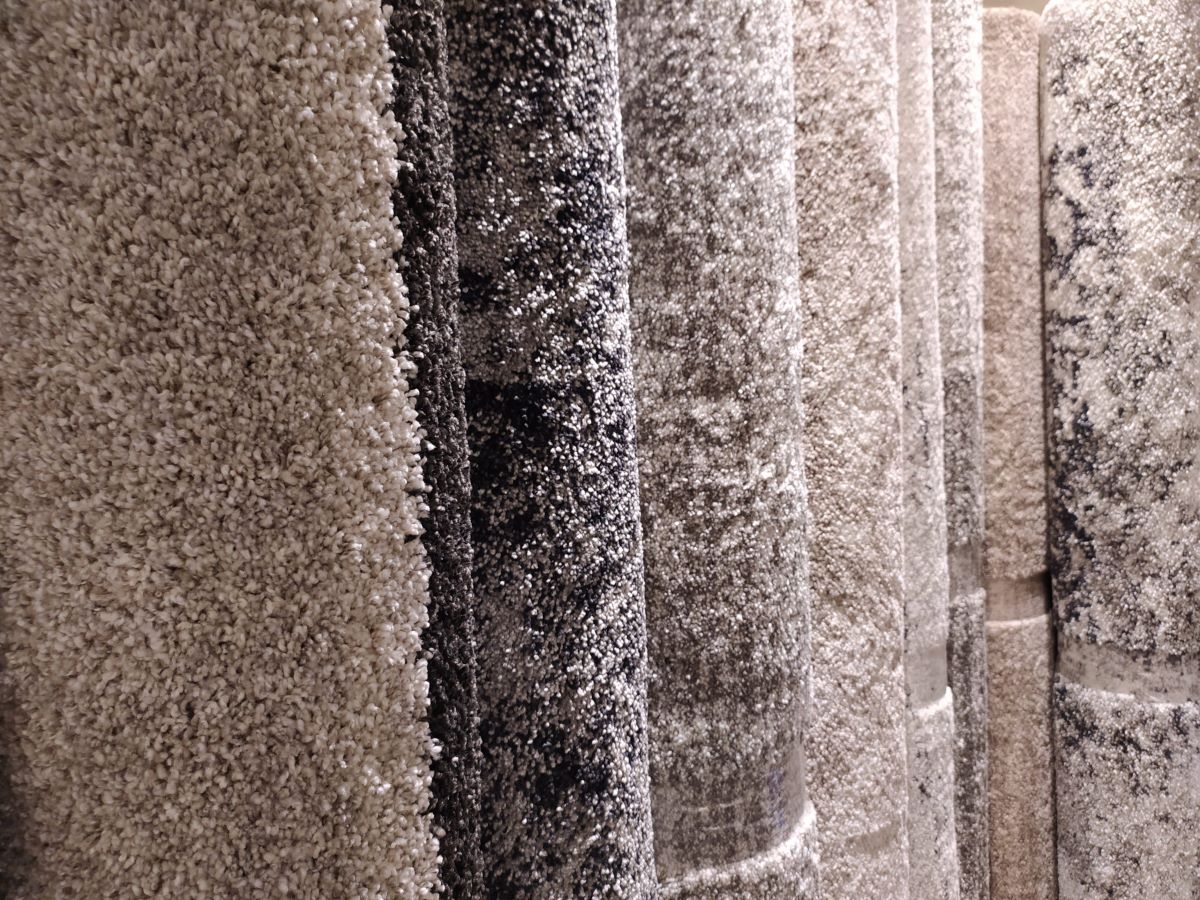


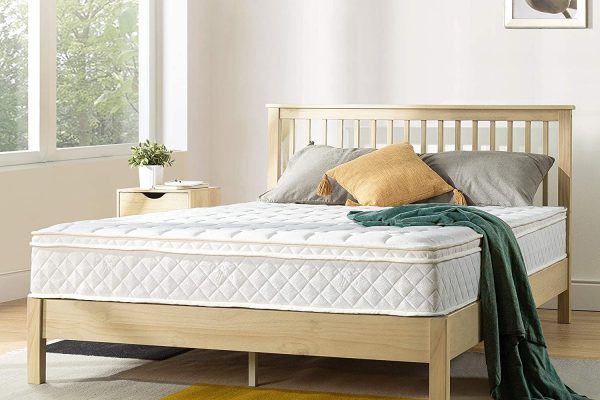

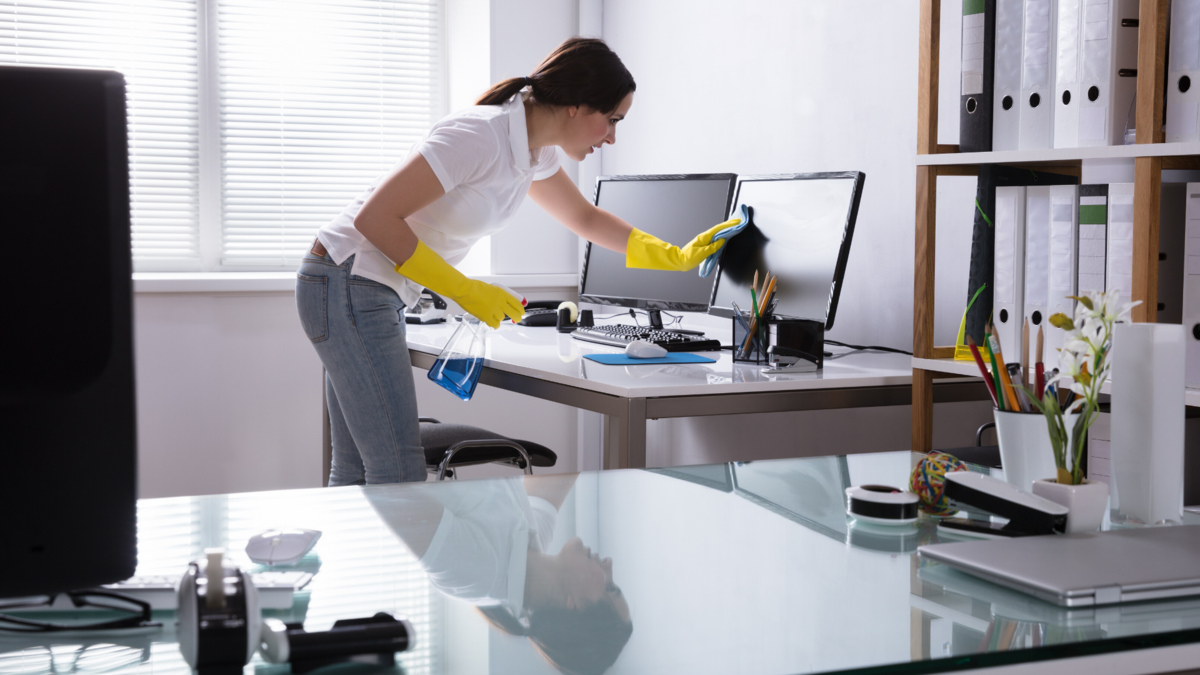

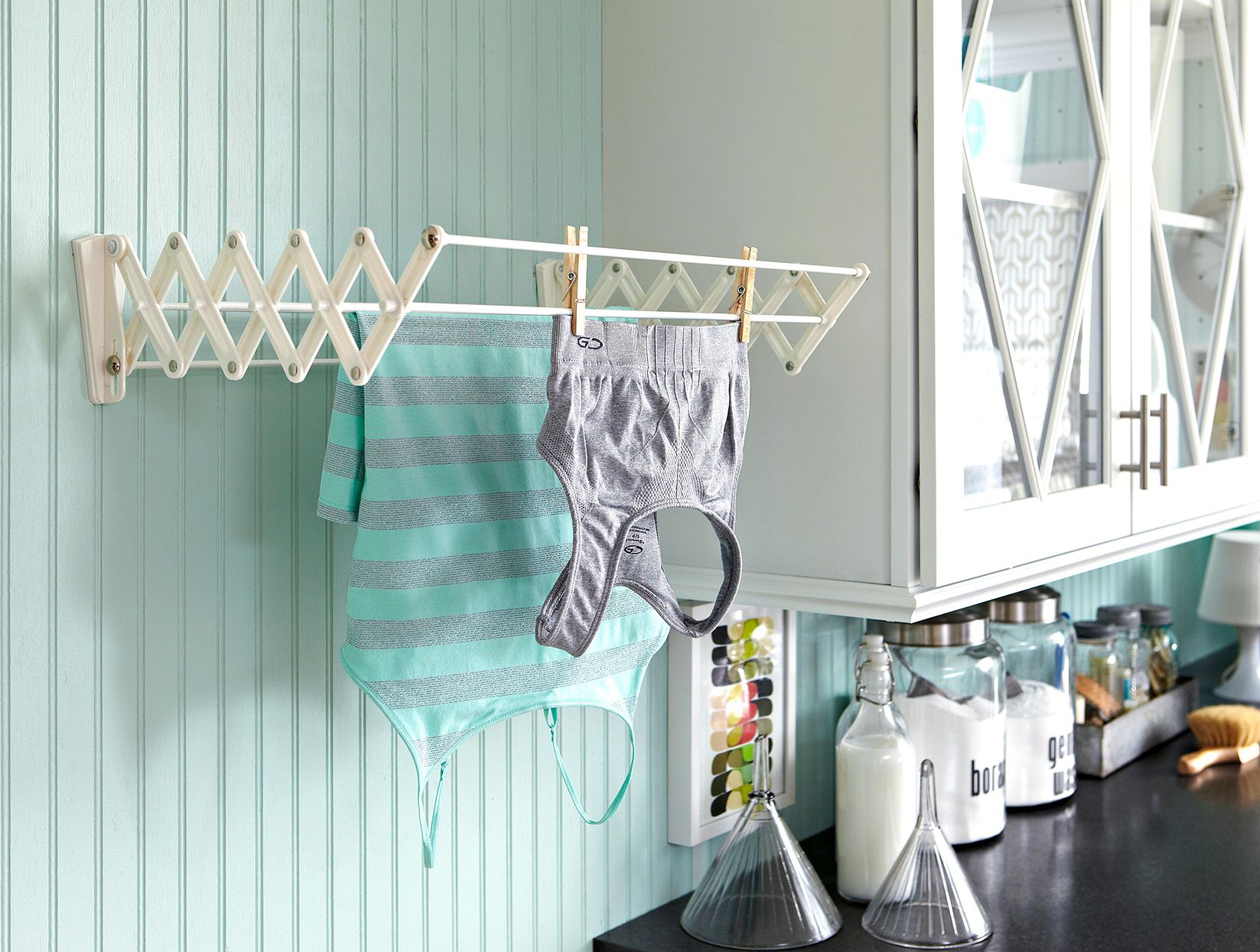
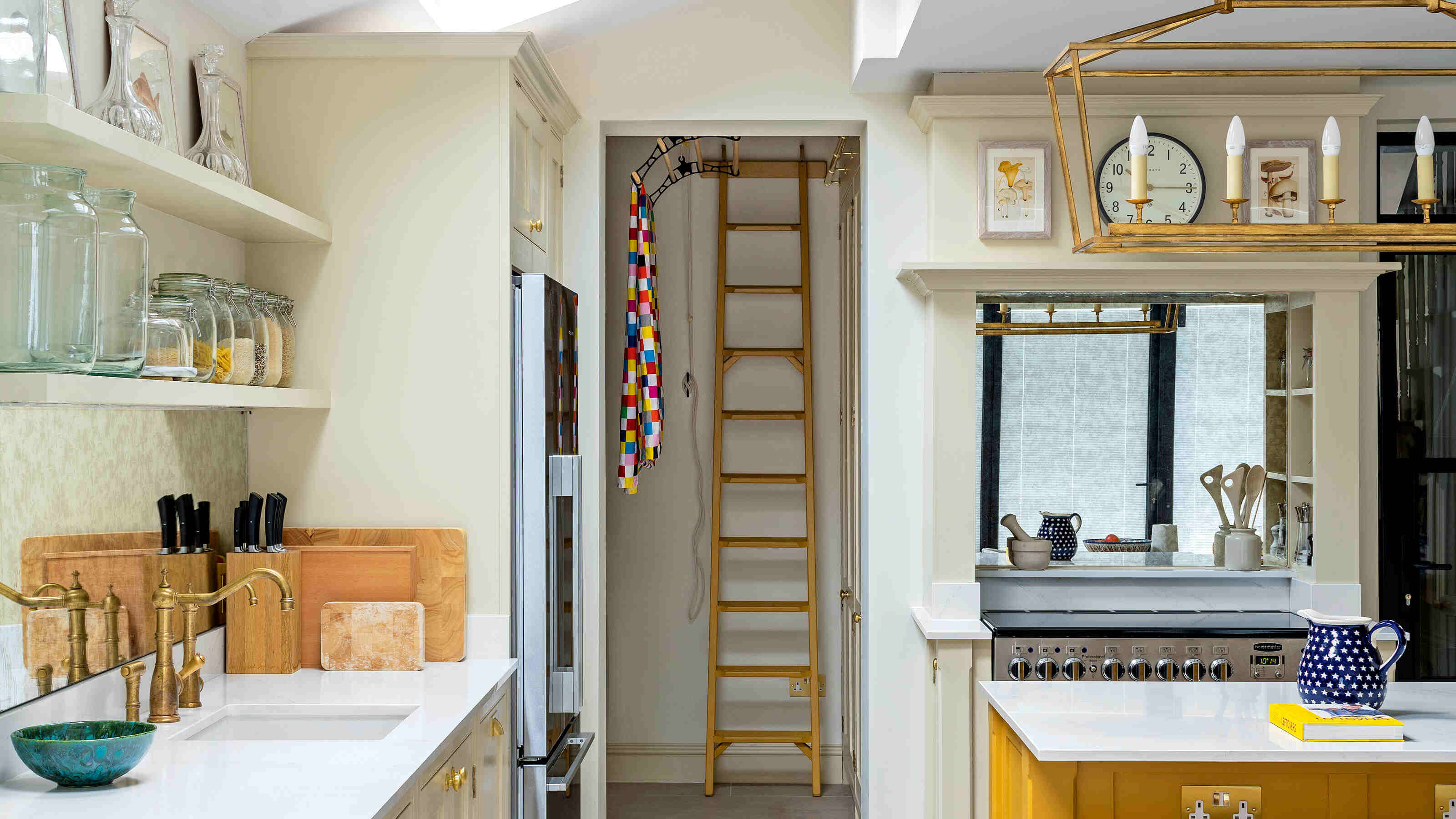
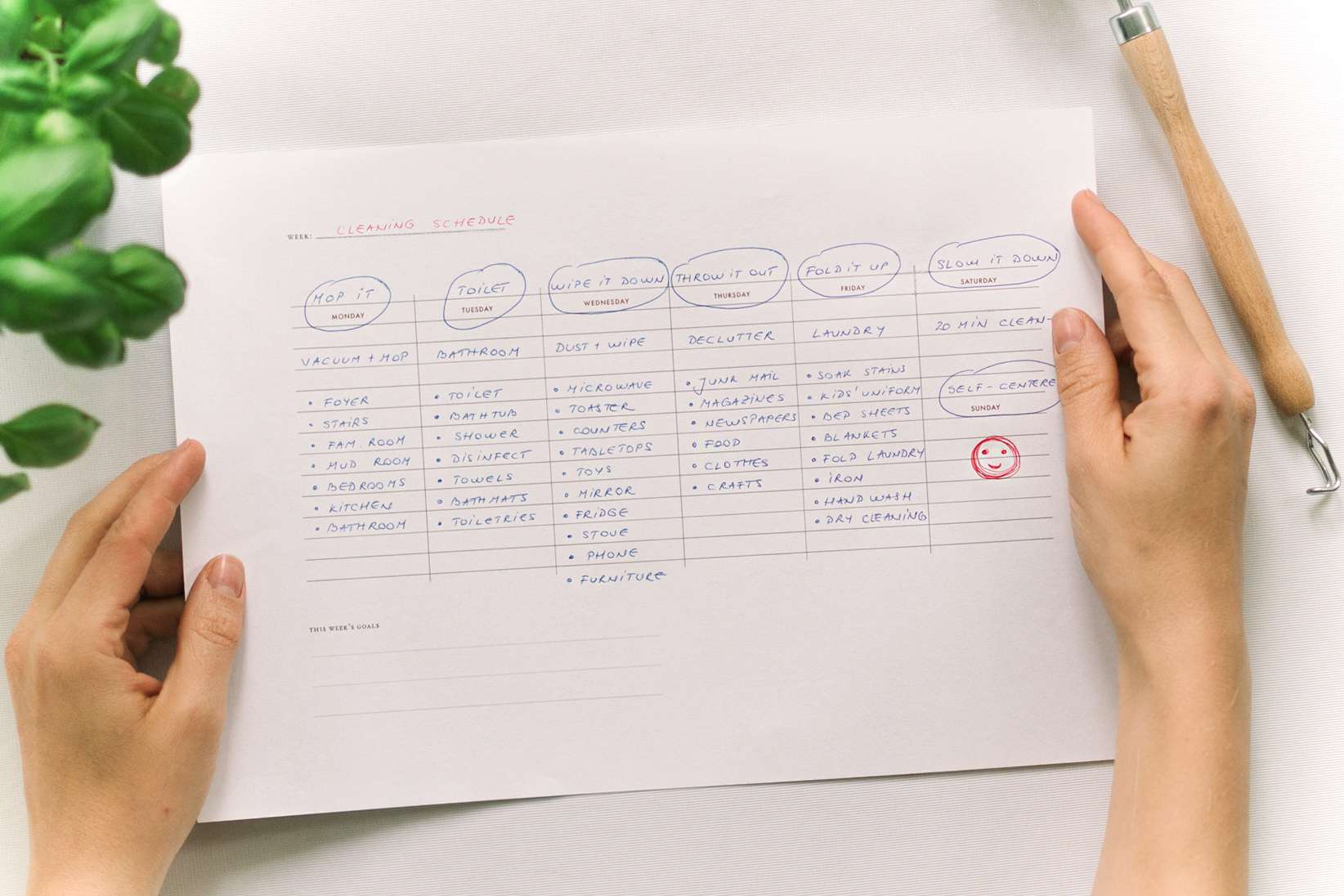

0 thoughts on “Spring Cleaning Checklist: The Ultimate Guide To A Tidier Home”